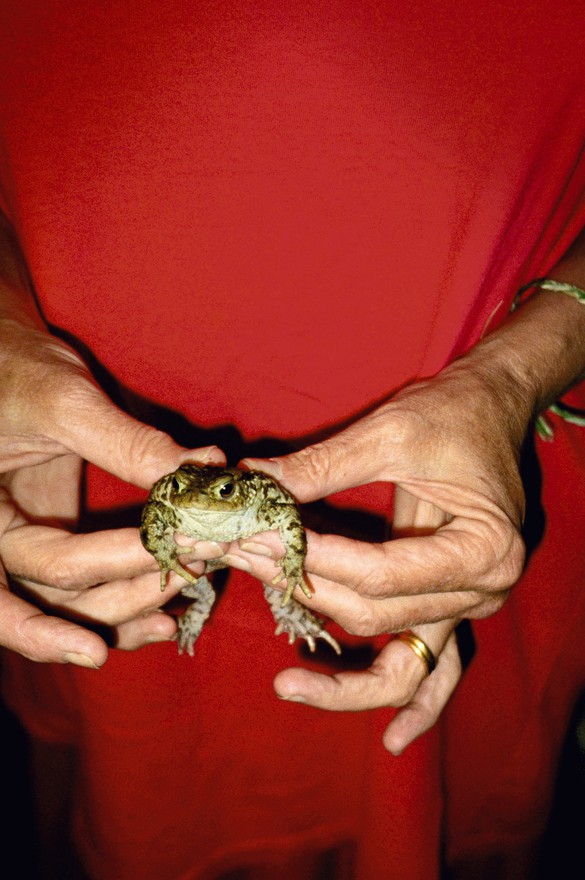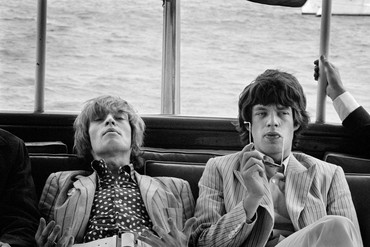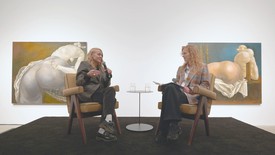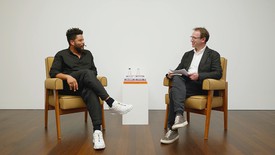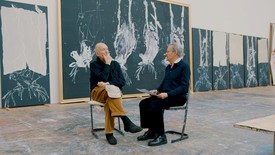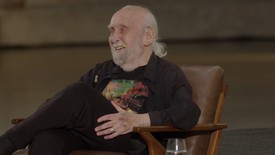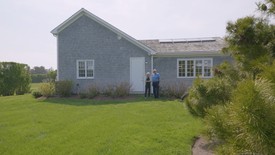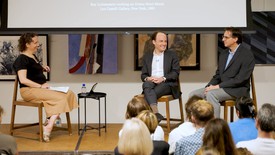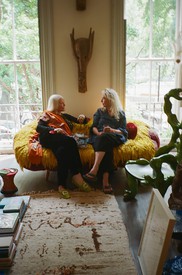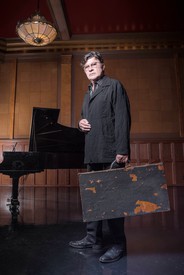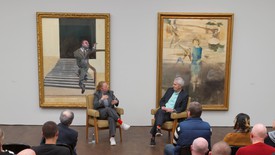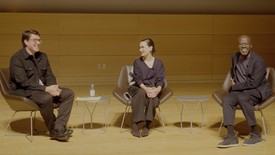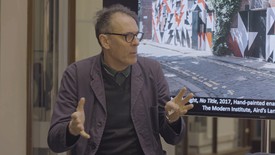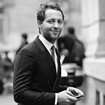
Derek Blasberg is a writer, fashion editor, and New York Times best-selling author. He has been with Gagosian since 2014, and is currently the executive editor of Gagosian Quarterly.
Derek BlasbergHave you always wanted to do an exhibition of your photographs with your mother’s?
Mary McCartneyYes. But I had always thought it would have been much later in my career.
DBWhy later?
MMBecause I try to keep my work and my family separate, and I knew putting a show like this together would be a daunting, personal project. But once I started thinking about it, I started enjoying it. Whenever my mother and I would talk about photography, we’d always have similar thoughts and a similar eye. That became the premise of the show.
DBTalk to me about your childhood. You once used the phrase “peace convoy” to describe it to me. What does that mean?
MMThere’s an image in the show of a bare lightbulb hanging from the ceiling and a baby in someone’s hand. I’m the baby. In some ways that picture illustrates that I was more of a gypsy child rather than a rock royalty daughter. We grew up with food on our faces and clothes that didn’t fit, and it was all very funky—all of which was to our benefit. In the summer, we’d go to Scotland, and it was just us in a small house on a remote farm. That feeling of intimacy and observing people and striving for the intensity of characters evolved into why I’m obsessed with pictures.
That feeling of intimacy and observing people and striving for the intensity of characters evolved into why I’m obsessed with pictures.
Mary McCartney
DBHow dominant was your mother’s work when you were growing up?
MMShe was always taking pictures, but you didn’t realize it. She always had a camera around her neck and was at ease with it. You’d be talking and she’d pick it up, take a picture, and move on. Seamless. I have childhood memories of being in a darkroom with her when I was little, and watching a blank piece of paper become a photograph. In that magical moment, I became engaged in photography. Our styles are similar in that we’re both looking for stolen moments, as opposed to setup ones. We both find overly manicured situations really dull. We like to gain someone’s trust and get close to them and then snap. Collecting people’s stories is something I never get tired of doing.
DBWhen did you start taking pictures?
MMIn my early twenties. At first, I did picture research for a music company, because I loved photography, but didn’t think I could do it. And then, to be honest, I started looking at my friends’ holiday snapshots and they were so horrible that I thought, “Maybe I can do this.” Growing up around a photographer who made it look so effortless also made it intimidating as a career choice. But I learned from my mother that taking the picture is only part of the process.
DBYou once told me that being a photographer made you a participant and an observer at the same time. Do you think your mother felt the same way?
MMThe story of how my mother became the only photographer of the Rolling Stones on the SS Sea Panther [in 1966] is a good example of how she would be at the right place at the right time and just let things happen. I feel the same way: The best things happen by accident and then lead you on an adventure.
DBAdventure is important to the process?
MMSometimes I’ll be out and I’ll meet someone new, hear their story, and gain their trust. They’ll take me on their journey. The taking of someone’s picture should be a process that’s not a chore, because, c’mon, it’s not the easiest thing to do. People get quite stressed and tense in front of a camera.
DBRachel Feinstein once told me she thinks all artists are either trying to rebel from their childhood or trying to recreate it.
MMThen I’m extending my childhood. My childhood was about an interest in intimacy and intense situations. When I was shadowing the Royal Ballet [for an exhibition in 2007], I had a pass that let me go into the dressing rooms. I would stay with them and travel with them and share beds with them. I felt like an extension of their family.
DBAnd did that help you to portray them in a way they may not have presented another photographer?
MMI find people open up to me, and I don’t know why. Maybe it has something to do with my upbringing, which allows people to trust that I’m not going to take advantage of them. Or maybe they understand that I want to show them in a real way. My mother had that effect as well.
It turned out not to be just a mother-daughter show, but a show about the same eye that exists in two different people.
Mary McCartney
DBAnd how do you juggle being both a working woman and also a mother of four?
MMI’m frenetic, apparently! I think I grew up around it. My mum was a mother of four, and she was a photographer. I love what I do, and I love family and, to be honest, I don’t really plan things. Instead I just get on with it.
DBLet’s get back to this exhibition. Are the images labeled? Is it clear who’s who?
MMThey’re not labeled. Some of them you’ll know because it will be my dad in the ’60s or Rihanna today. You can figure it out that way. Otherwise, it’s nicer to let the viewer’s mind wonder, so they can have an experience and come up with their own stories. When it’s clear-cut, you lose the inquisitive nature.
DBThe images that I love the most are the moments of wanderlust and childhood innocence.
MMI want this show to be about moments, rather than setups. I love the innocence of not trying too hard. My mother was the most non-agenda’ed, most relaxed person. She never spent much time worrying about what other people thought about her. A lot of people say, “I don’t care what people think,” but it’s hard to really mean it. She did. How liberating is that?
DBHas your family seen the pictures in the show?
MMYes, I took a big box of prints and showed them to my father early on. Then he went away to America and saw them again there when I emailed him the finished pairings and groups. He phoned me, and he sounded excited. When he finds something interesting, it’s a good sign.
DBWas this whole thing therapeutic?
MMOh, absolutely. Exciting at first, and then daunting, then exciting again, and now there’s all this adrenaline. The whole thing reminded me of why I became a photographer in the first place, and why and how my mother and I influenced each other for so long. It turned out not to be just a mother-daughter show, but a show about the same eye that exists in two different people.
Linda McCartney and Mary McCartney: Mother Daughter at Gagosian 976 Madison Avenue, New York, November 20, 2014–January 30, 2015.
